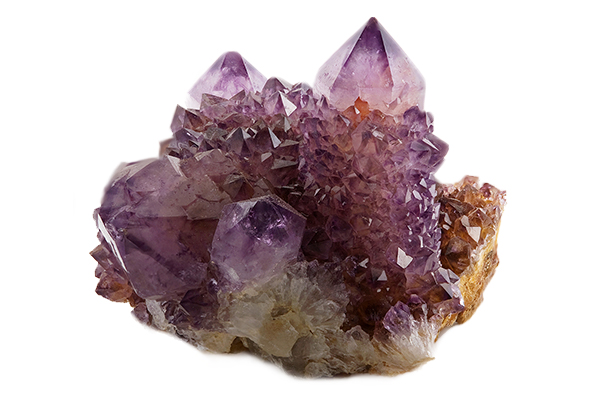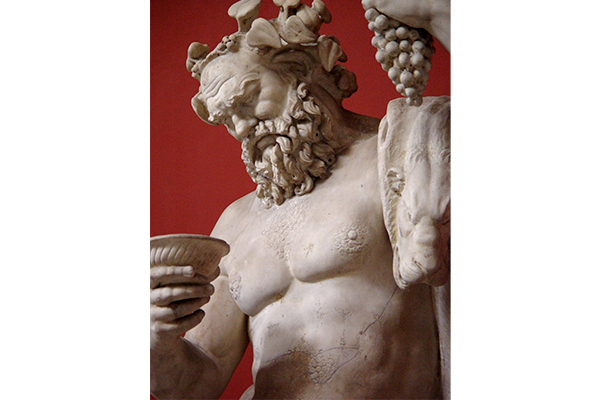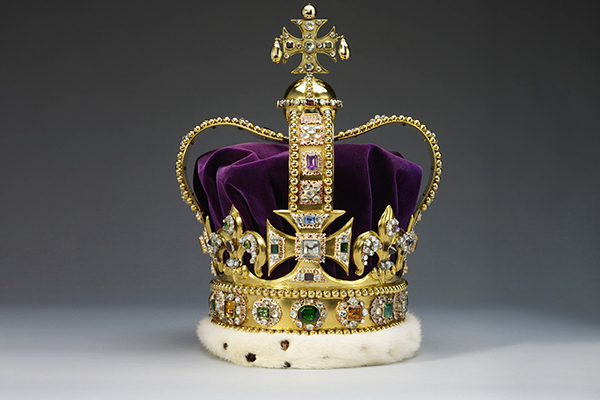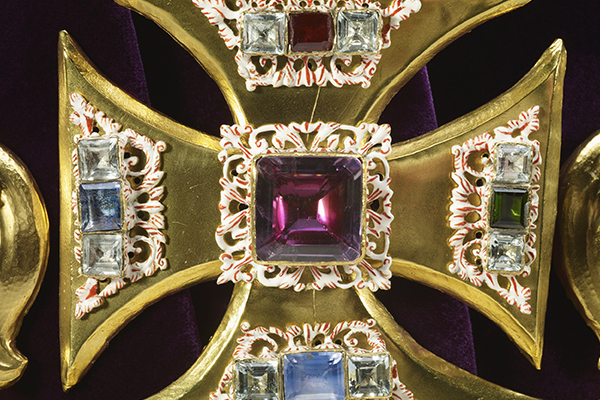14 DAY MONEY-BACK GUARANTEE - FREE WORLDWIDE DELIVERY
SAME-DAY LONDON DELIVERY


An Amethyst Rough Crystal
The alluring amethyst is a gemstone from the quartz family. It varies in shades ranging from pale lilac to deep violet, and boasts a rich history tied to mythology and royalty. The word ‘amethyst’ derives from the ancient Greek ‘amethystos’ translating to ‘not drunken’. The Greeks believed that wearing amethyst would prevent intoxication, and over time, this association became deeply ingrained in the symbolism of the gemstone.
Whilst today amethyst is known to gain its purple colouration from iron impurities within the crystal, according to one Greek legend, its purple hue derived from when the god of wine and revelry, Dionysus, became angered and decided to release his wrath upon humanity by unleashing tigers. A young maiden named Amethyst was on her way to pay homage to the goddess Artemis when she sought refuge in a cave and prayed for protection. Artemis, to save Amethyst from the ferocious tigers, transformed her into a white crystal. When Dionysus realized the consequence of his anger, he felt remorse and poured wine over the crystal, giving it a deep purple hue.

Ancient Greek Statue Of Dionysus
The historical reverence for amethyst as a precious gemstone finds its roots in antiquity, both regally and religiously, and is notably highlighted for its inclusion among the twelve gemstones adorning the Priestly Breastplate, as documented in the Book of Exodus. This selection of gemstones later laid the foundation for the concept of birthstones, amethyst being the birthstone for the month of February! Indeed, throughout Christian history, amethyst has held symbolic significance, with its purple colour representing penitence and being the liturgical colour for the seasons of Lent and Advent. Thus, the amethyst is often seen gracing episcopal rings of bishops and clergymen.
The British crown jewels incorporate amethyst in several prominent pieces, symbolising power and luxury. A notable example is of the amethysts set in the St Edward’s Crown, which dates to the 1661 coronation of Charles II.

St Edward's Crown
It has since been worn at every monarch’s coronation. Royal connections have not only elevated the status of amethyst jewellery, but also contributed to its timeless appeal as a gemstone associated with majesty and elegance, purple reign indeed!

Close Up Detail Of One Of The Many Amethysts In The Crown
Beyond its aesthetic appeal, amethyst is believed by some to have healing properties, promoting emotional balance, tranquillity, and spiritual insight in alternative and holistic practices. The cultural and religious connections to amethyst contribute to its esteemed status as one of the world's most cherished gemstones.
Amethyst jewellery stands as a testament to the intertwining threads of mythology, history, and regal elegance. Our collection of rare and distinctive amethyst rings and jewellery invite you to explore this timeless gemstone. For more insights and to discover the allure of the amethyst, we welcome you to connect with our jewellery experts. Schedule an appointment through the Berganza website and embark on a journey to view these captivating purple treasures!
Connect with us
Signs up for regular emails on our new acquisitions, news and features: